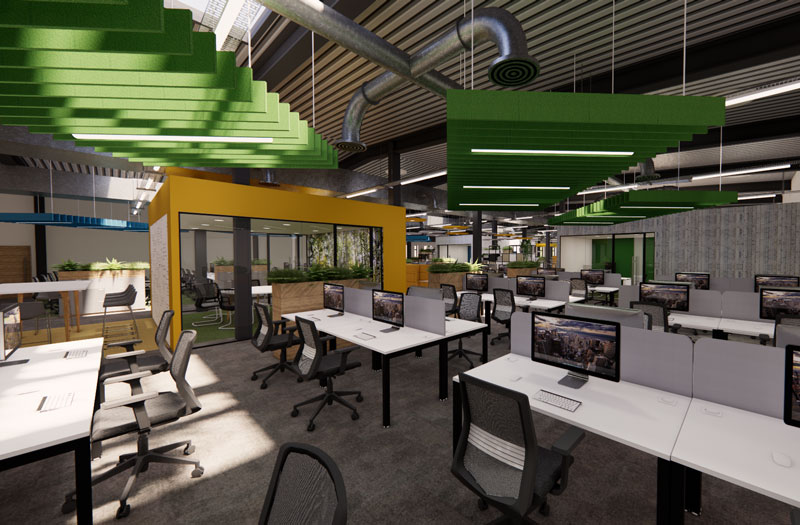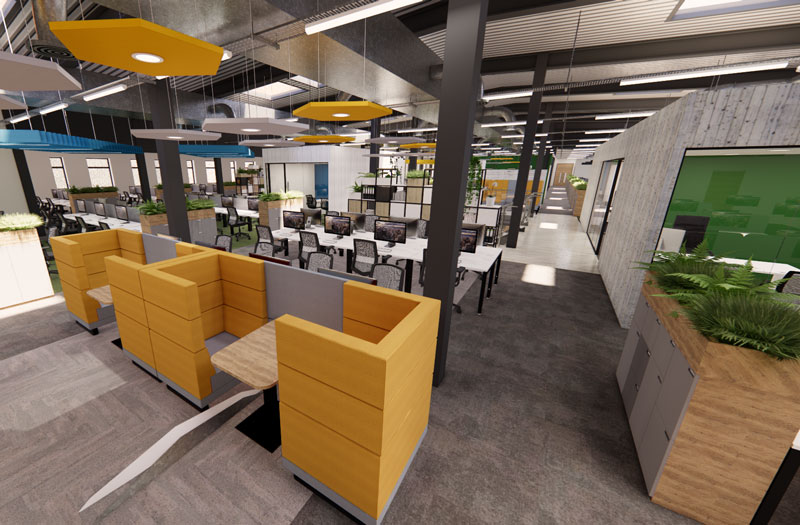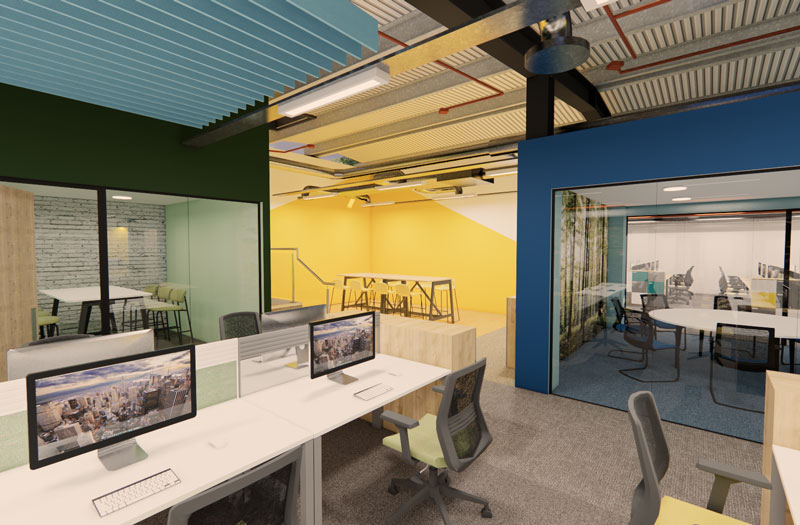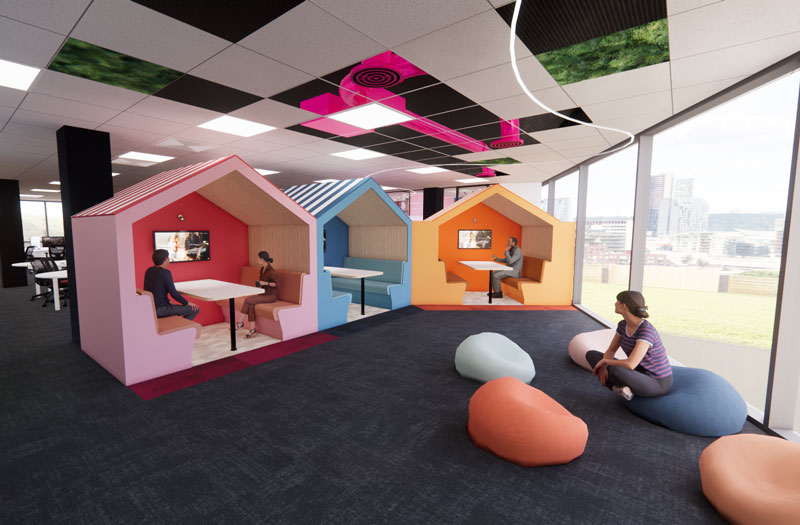Tradeglaze 2025 – A Year in Review by Jeremy Wetherall, MD
As we approach the end of 2025, I find myself reflecting with genuine pride on what has been a landmark year for Tradeglaze. ...
Read More



Lincolnshire-based commercial fit out and design company APSS, has confirmed what it predicts will be the office design trends of 2023.
Businesses will see staff take advantage of the office environment again but in new ways. Many have become accustomed to the freedom of working from home. However, rising costs mean staff are ready to move back to the office on a more regular basis. This is especially true if they are trying to heat the house for just one person.
So, what does this mean for businesses? There will be a need to have an environment that accommodates its staff in more ways than an office has ever done. Over the decades, the only thing that has been consistent with the office environment is the requirement to allow people to work.
Long gone are the days when magnolia walls, cheap carpet and a few desks were enough. Staff need so much more and when a company doesn’t provide the right environment, staff are seen leaving for greener pastures.
Hybrid Offices
With more staff returning to the office, the hybrid working environment continues to adapt and become more prevalent. However, the days of being chained to a desk are in the past. Staff enjoy having their home comforts in the workplace – a more relaxed sofa to work on, a range of collaboration areas for teamwork and smaller meeting pods for solo or smaller groups to help reduce noise and improve concentration.
For some companies, a hybrid office can mean a downsizing. These companies are confident they will not host all staff in one office again for the foreseeable future. However, other businesses are keen to keep the culture and the energy of the office alive.
They will adapt the office to fit the requirements of the staff, creating a more dynamic environment. When staff have been used to working at home, it’s important the office compliments the way they now work.
Acoustics and Concentration in the Office
One of the positives of working from home has been a quieter environment. This is great for calls, video conferences and the ability to concentrate better with minimal distraction. An open-plan office is great for communication and teamwork, but with more people in the office acoustics and quieter spaces will be imperative. Office designs for 2023 will see more quiet areas included through private workstations and meeting rooms.
Acoustics has become a primary focus to reduce excessive noise levels. Biophilic designs help dampen noise levels with the incorporation of plants and water features. Acoustic ceiling rafters are taking their place in the office providing a great feature whilst providing a practical purpose of absorbing additional noise. Feature slat walls will also become more prevalent to help reduce echo and excess noise and look great too.
Natural and Biophilic Office Designs
Biophilic office designs have been on the rise for a while now. Awareness of the benefits of working in an environment tied to nature is high and this trend will continue to develop over the next year. In addition to the living green walls, it will move forward with more natural, earthy colour schemes. White finishes are expected to be a thing of the past as natural wood colours take over and enhance that tie to nature.
More plants will be welcomed into the office environment, however these need to be incorporated sensibly. Too few and it looks like a token effort. Too many and your office suddenly begins to look like an overgrown jungle where you expect the cast of Jumanji to come running through at any second.
Businesses are shifting focus to providing an environment for positive mental health. Maximising the natural light that is able to permeate the whole office continues to be on the agenda. A huge difference can be made by adapting offices from having one small window to incorporating curtain walling and glass partitions.
Adding a water feature can be very impactful, creating a more tranquil environment for concentration.
All of this provides another link to the natural world, creating a more relaxed feeling for staff.
Staff Wellbeing
The pandemic highlighted the importance of people’s personal well-being and looking after their mental health. Promoting a positive attitude to mental health and staff well-being has become a key factor in office design.
Encouraging staff to be more active and providing the ability to adjust their posture throughout the day is a great place to start. Providing the right break space and boosting natural light is also essential. If your staff can’t get away from their desk for a break, you will see the quality of their work gradually decrease along with their motivation.
Providing the right equipment, like stand-sit desks, or maybe installing a gym in an unused room, can help staff better balance their work-life balance. These are things staff are unlikely to have at home and are a big incentive for making that commute to the office.
Staying Connected
Even though staff are looking to make the move back to the office, many businesses’ customer base has stretched much further afield. This means connectivity and having the right space available for video calls are just as important as it was during the pandemic.
As a culture, we took huge strides in technology in the last three years and this is now engrained into our daily lives. Small “phone booths” or Zoom meeting pods for video calls, or just a bit of quiet will be a big trend going forward.
Media and interactive walls provide a great presentation stage for the online world too.
Sustainable and smart office design
Sustainability and the goal of having a carbon-neutral office remain a key focus for those on the hunt for a new design. This goes hand in hand with a smart office as they reduce the company’s bills and its carbon footprint. If you’re upgrading your workplace, updating the technology can save you in the long run, and of course, it’s better for the planet.
Solar panels on the roof of your building help reduce your energy bills whilst also reducing carbon footprints but when it comes to internal design, recycled materials are becoming more popular. These fabrics, used for anything from carpet tiles to fabric for seating, look and feel great and help reduce pollution. Some of these fabrics are made with plastic dredged from the sea, so have a fantastic ethical reputation.
Office designs for 2023 need to be smarter to help with sustainability. Light sensors and LED lighting help reduce unnecessary energy usage along with automated climate controls. These find usage patterns and regulates temperatures to create a more comfortable and sustainable working environment.
APSS has expert staff on hand to help you create an effective and impressive working environment for your staff and visitors alike. Visit the website to see how APSS can help transform your office.
As we approach the end of 2025, I find myself reflecting with genuine pride on what has been a landmark year for Tradeglaze. ...
Read MorePentangle Engineering Services Ltd is proud to announce that Nigel Rivers , has been recognised as one of Britain’s Great...
Read MoreLog into your account
If you have difficulty logging in, please reset your password. If you continue to experience issues, please email marketing@lincs-chamber.co.uk
